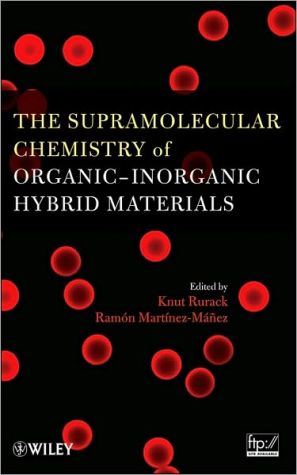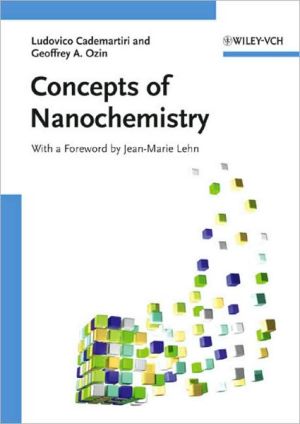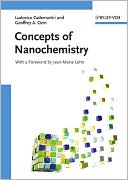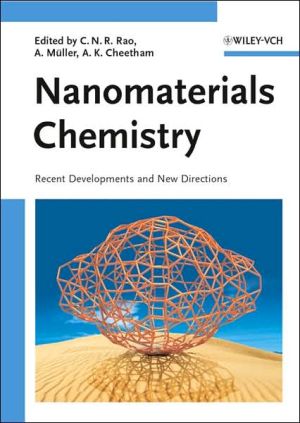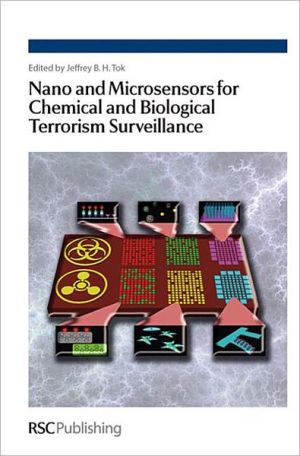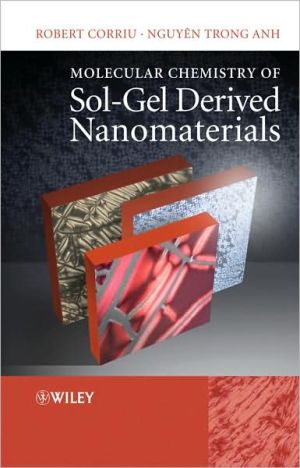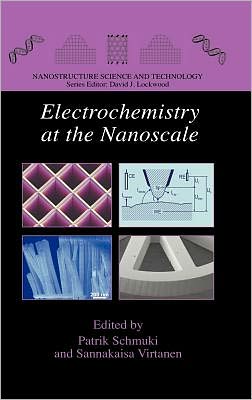The Supramolecular Chemistry of Organic-Inorganic Hybrid Materials
The combination of supramolecular chemistry, inorganic solids, and nanotechnology has already led to significant advances in many areas such as sensing, controlled motion, and delivery. By making possible an unprecedented tunability of the properties of nanomaterials, these techniques open up whole new areas of application for future supramolecular concepts. The Supramolecular Chemistry of Organic-Inorgnic Hybrid Materials gathers current knowledge on the subject and provides an overview of...
Search in google:
An introduction to concepts and applications of supramolecular hybrid materialsThe combination of supramolecular chemistry, inorganic solids, and nanotechnology has already led to significant advances in many areas such as sensing, controlled motion, and delivery. By making possible an unprecedented tunability of the properties of nanomaterials, these techniques open up whole new areas of application for future supramolecular concepts. The Supramolecular Chemistry of Organic–Inorganic Hybrid Materials gathers current knowledge on the subject and provides an overview of the present state and upcoming challenges in this rapidly growing, highly cross- or interdisciplinary research field.Chapters cover:Basic materials design along with synthesis, characterization, and fundamental propertiesSupramolecular chemistry strategies and processesSignaling mechanisms and signal generationApplications in many diverse areasFuture possibilities and potential trends in supramolecular hybrid materialsThe book details how these designed materials can improve existing materials or generate novel functional features such as chemical amplification, cooperative binding and signal enhancement that are difficult or not at all achievable by classical organic supramolecular chemistry. It also discusses issues related to nanofabrication or nanotechnology such as the directed and controlled assembly or disassembly, biomimetic functions and strategies, and the gating and switching of surface functions or morphology.Collecting exciting recent work on the fusion of two topical fields of research—supramolecular chemistry and hybrid materials design—this pioneering study provides an important reference for supramolecular chemists, materials scientists, analytical chemists, and high-level students in these fields.
Preface ixEditors and Contributors xiiiAbbreviations xix1 Hybrid (Nano)Materials Meet Supramolecular Chemistry: A Brief Introduction to Basic Terms and Concepts Knut Rurack Ramón Martínez-Máñez 12 Supramolecular Chemistry at the Mesoscale Katsuhiko Ariga Gary J. Richards Jonathan P. Hill Ajayan Vinu Toshiyuki Mori 11Part 1 Organic-Inorganic Hybrid Nanomaterials3 Silica-Based Mesoporous Organic-Inorganic Hybrid Material Frank Hoffmann Michael Fröba 394 Modified Gold Nanoparticles and Surfaces Paolo Pengo Lucia Pasquato 1135 Organically Functionalized Semiconductor Nanocrystals: Synthesis, Properties and System Design for Optoelectronic Applications Peter Reiss Julia de Girolamo Adam Pron 1556 Functionalized Carbon Nanotubes for Bioapplications Lingrong Gu Fushen Lu Pengju G. Luo Haifang Wang Mohammed J. Meziani Ya-Ping Sun 1977 Metal-Organic Frameworks (MOFs) and Coordination Polymers Shin-Ichiro Noro Susumu Kitagawa 235Part 2 Improvement-of Signaling and Sensing by Organization on Surfaces8 Nanoparticle and Biomolecular-Nanoparticle Hybrid Supramolecular Complexes for Electrochemical Signaling Ronen Polsky Jason C. Harper Susan M. Brozik 2739 Modified Nanoparticles as Nanoelectrocatalysts and Amplifying Sensors Shaojun Guo Erkang Wang Xiurong Yang 29710 Signal Generation with Gold Nanoparticles: Photophyskal Properties for Sensor and Imaging Applications Qingshan Wei Alexander Wei 31911 Optical Signaling with Silica Nanoparticles Fabrizio Mancin Paolo Tecilla Umberto Tonellato 35112 Organically Modified Quantum Dots in Chemical and Biochemical Analysis María Teresa Fernández Argüelles José M. Costa-Fernández Rosario Pereiro Alfredo Sanz-Medel 377Part 3 Control of Supramolecular Nanofabrication, Motion, and Morphology13 Chemically Directed Self-Assembly of Nanoparticle Structures on Surfaces Xing Yi Ling David N. Reinhoudt Jurriaan Huskens 40714 Immobilization and Patterning of Biomolecules on Surfaces Dorota I. Rozkiewicz Ban Jan Ravoo David N. Reinhoudt 43315 Switchable Host-Guest Chemistry on Surfaces Jilie Kong Chunming Jiang Li Mu 46716 Nanogated Mesoporous Silica Materials Igor I. Slowing Brian G. Trewyn Victor S.-Y. Lin 47917 Building Molecular Machines on Surfaces Alberto Credi Serena Silvi Margherita Venturi 50318 Control of Morphology in Mesoporous and Mesostructured Hybrid Materials Darren R. Dunphy Bernd Smarsly C. Jeffrey Brinker 531Part 4 Biomimetic Chemistry19 Biomimetically Inspired Signaling Knut Rurack Ramón Martínez-Máñez Fléix Sancenón Ana B. Descalzo 54920 Imprinted Functionalized Silica Maryanne M. Collinson 58121 Bioinspired Block Copolymer-Based Hybrid Materials Marleen Kamperman Ulrich Wiesner 599Part 5 Interfacial Chemistry, Multifunctionality, and Interdisciplinarity22 Emerging Concepts in Interfacial Chemistry of Hybrid Materials: Nanocontainer-Based Self-Healing Coatings Dmitry G. Shchukin Daria V. Andreeva Katja Skorb Helmuth Möhwald 63923 Molecular Schizophrenics: Switchable Materials with Multiple Functions Robert Byrne Dermot Diamond 65324 Hybrid Nanomaterials Research: Is It Really Interdisciplinary? Ismael Rafols Martin Meyer Jae-Hwan Park 67325 Supramolecular Chemistry Meets Hybrid (Nano)Materials: A Brief Look Ahead Knut Rurack Ramón Martínez-Máñez 689Appendix 1 701Index 707
\ From the Publisher"This book will find use for those generally interested in such hybrid systems. With some prior knowledge, one can browse through the topics and then proceed to the literature for more complete and in-depth coverage." (JACS, 2010)\ \ \
